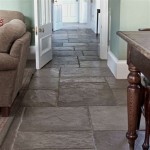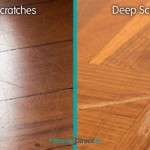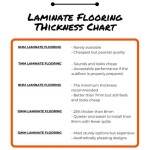Green Marble Linoleum Flooring: An In-Depth Look
Green marble linoleum flooring offers a unique blend of aesthetic appeal and practical benefits, making it a compelling choice for both residential and commercial spaces. This flooring option simulates the luxurious look of natural green marble at a fraction of the cost, while also providing durability, sustainability, and ease of maintenance. Understanding the composition, advantages, installation, and maintenance of green marble linoleum flooring is crucial for making an informed decision.
Linoleum, unlike vinyl, is a natural and biodegradable material. It is primarily composed of linseed oil, rosin, wood flour, cork dust, limestone, and pigments. These materials are pressed onto a jute backing, creating a durable and resilient flooring surface. The green marble effect is achieved through the incorporation of pigments and patterns during the manufacturing process, replicating the veining and coloration found in genuine green marble.
The aesthetic value of green marble linoleum flooring lies in its ability to mimic the elegance of natural stone. Green marble evokes a sense of nature, tranquility, and sophistication. The variations in color and pattern create a visually dynamic surface that can complement a wide range of interior design styles, from classic to contemporary. The availability of different shades of green, ranging from subtle moss tones to bolder emerald hues, further enhances its versatility.
Key Benefits of Green Marble Linoleum Flooring
Several advantages contribute to the popularity of green marble linoleum flooring. These advantages extend beyond its aesthetic appeal, encompassing cost-effectiveness, environmental friendliness, durability, and ease of maintenance.
Firstly, the cost of green marble linoleum is significantly lower than that of genuine green marble. Natural marble is a premium material that requires extensive quarrying, processing, and installation. Linoleum, on the other hand, is manufactured in a controlled environment, allowing for economies of scale and reduced production costs. This affordability makes the luxurious look of green marble accessible to a wider range of budgets.
Secondly, linoleum is a sustainable flooring option. Its primary components are natural and renewable resources. Linseed oil is derived from flax plants, rosin from pine trees, and wood flour and cork dust from wood and cork waste. The jute backing is also a natural fiber. This composition makes linoleum biodegradable and contributes to a smaller environmental footprint compared to synthetic flooring options such as vinyl. Furthermore, the manufacturing process of linoleum typically requires less energy than that of other flooring materials.
Thirdly, linoleum is a durable and resilient flooring material. It can withstand heavy foot traffic, making it suitable for both residential and commercial applications. The inherent elasticity of linoleum allows it to recover from indentation, minimizing the appearance of scratches and dents. Properly maintained, linoleum can last for decades, providing a long-term flooring solution. The durability of linoleum also contributes to its sustainability, as it reduces the need for frequent replacements.
Finally, linoleum is relatively easy to maintain. Regular sweeping or vacuuming is sufficient to remove dust and debris. For deeper cleaning, a damp mop and a mild detergent can be used. Linoleum is naturally antibacterial due to its linseed oil content, which inhibits the growth of microorganisms. This makes it a hygienic flooring option, particularly suitable for kitchens, bathrooms, and healthcare facilities. While linoleum is water-resistant, it is important to avoid prolonged exposure to standing water, as this can damage the jute backing. Applying a protective sealant periodically can further enhance its water resistance and durability.
Installation Considerations for Green Marble Linoleum Flooring
Proper installation is crucial for ensuring the longevity and performance of green marble linoleum flooring. The installation process typically involves preparing the subfloor, cutting and fitting the linoleum, and adhering it to the subfloor with a suitable adhesive.
The subfloor must be clean, level, and dry before installation. Any imperfections, such as cracks or bumps, should be repaired to provide a smooth and stable surface for the linoleum. A self-leveling compound may be necessary to create a perfectly level subfloor, especially in older buildings. Moisture testing is also essential to ensure that the subfloor is not excessively damp, as moisture can damage the linoleum and lead to mold growth.
Linoleum is available in both sheet and tile formats. Sheet linoleum is typically used for larger areas, while tiles are suitable for smaller spaces or intricate designs. When installing sheet linoleum, it is important to accurately measure the room and cut the linoleum slightly larger than necessary to allow for trimming. The seams between sheets should be carefully aligned and sealed to prevent moisture penetration.
The adhesive used to bond the linoleum to the subfloor should be specifically designed for linoleum flooring. Water-based adhesives are generally preferred, as they are low in volatile organic compounds (VOCs) and environmentally friendly. The adhesive should be applied evenly to the subfloor and the linoleum sheet or tile should be carefully positioned and pressed into place, ensuring full contact with the adhesive. A roller can be used to further secure the linoleum and remove any air bubbles.
Professional installation is recommended, particularly for sheet linoleum, as it requires specialized tools and expertise. A professional installer can ensure that the linoleum is properly cut, fitted, and adhered, resulting in a seamless and durable flooring surface. In addition, professional installers are typically familiar with the specific requirements of different linoleum brands and can provide valuable advice on maintenance and care.
Maintenance and Care of Green Marble Linoleum Flooring
Proper maintenance is essential for preserving the beauty and extending the lifespan of green marble linoleum flooring. Regular cleaning and the application of protective coatings can help protect the surface from wear and tear and maintain its aesthetic appeal.
Regular sweeping or vacuuming is the first line of defense against dirt and debris. This helps prevent the accumulation of abrasive particles that can scratch the surface of the linoleum. A soft-bristled broom or a vacuum cleaner with a brush attachment is recommended. Avoid using harsh scouring pads or abrasive cleaners, as these can damage the surface.
For deeper cleaning, a damp mop and a mild detergent can be used. The detergent should be pH-neutral and specifically designed for linoleum flooring. Avoid using excessive amounts of water, as this can damage the jute backing. Wring out the mop thoroughly before cleaning, and dry the floor with a clean cloth after mopping. Avoid using steam cleaners, as the high heat and moisture can damage the linoleum.
Applying a protective sealant or wax can further enhance the durability and water resistance of linoleum flooring. A sealant creates a barrier that protects the surface from scratches, stains, and moisture. The frequency of application depends on the level of foot traffic and the specific product used. Follow the manufacturer's instructions for application and reapplication. It is important to choose a sealant that is compatible with linoleum flooring and that does not contain harsh chemicals or solvents.
In addition to regular cleaning and sealing, prompt attention to spills is essential. Wipe up spills immediately with a clean cloth to prevent staining. Avoid using harsh chemicals or abrasive cleaners, as these can damage the surface. For stubborn stains, a mild solution of baking soda and water can be used. Apply the solution to the stain, let it sit for a few minutes, and then gently scrub with a soft cloth. Rinse with clean water and dry thoroughly.
Protecting linoleum flooring from direct sunlight can help prevent fading. Use curtains or blinds to block direct sunlight during peak hours. In areas with heavy foot traffic, consider using rugs or mats to protect the floor from wear and tear. Avoid dragging heavy furniture across the floor, as this can cause scratches and dents. Use furniture pads under the legs of furniture to distribute the weight and prevent damage.
By following these maintenance and care tips, the beauty and functionality of green marble linoleum flooring can be enjoyed for many years. Its inherent durability, combined with proper care, makes it a sustainable and cost-effective flooring solution for a wide range of applications.

Carrara Jade Marble Sheet Vinyl Flooring Best4flooring

Vinyl Tile Flooring Sheets Miniature Wood Houseworks

Emerald Green Marble Luxury Vinyl Tile All Your Flooring

Portoro 526 Ultimate Stone Vinyl Flooring Lino Carpets

Green Vinyl Flooring At Com

Buy Green Malachite Vinyl Floor Tiles Turquoise Gold Wall Panels Marble Luxury Tile Home Decor In

Marmoleum Marbled Flooring By Forbo Systems

Forbo Marmoleum Marbled Fresco 3271 Hunter Green Linoleum Flooring

Marble Vinyl Flooring Roll Black White Green Tile Effect Foam Sheet Lino

Tesated Victorian Geometric Black Green And Beige Vinyl Flooring Era Atkinson
Related Posts








